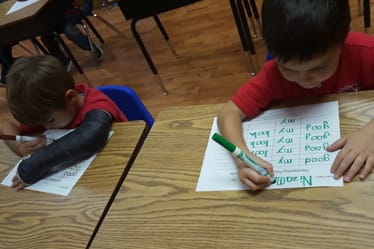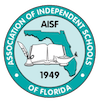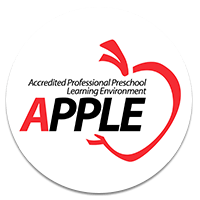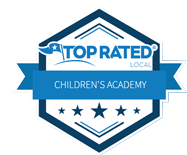
In American schools, the English language learner population has almost doubled over the past decade while the overall student population has remained relatively unchanged. The percentage of public school students in the United States who were English-language learners [ELLs] was higher in school year 2014–15 (9.4 percent, or an estimated 4.6 million students) than in 2004–05 (9.1 percent, or an estimated 4.3 million students) and 2013–14 (9.3 percent, or an estimated 4.5 million students) (National Center for Education Statistics, 2017). In Florida, one student in ten is an English language learner. ELL students increasingly appear to be concentrated in a small number of public schools as 70% of ELL elementary school students go to just 10% of the public schools in the United States (National Center for Education Statistics [NCES], 2017).
Worrisome trends in ELL student performance also reinforce the need for developing a deeper understanding and design a strategy to improve ELL academic assessment performance and achievement of learning goals (Fix & McHugh, 2010; Goldberg, 2000; Schon, 1987). The National Assessment of Educational Progress, our Nations’ Report Card,reveals that ELL student scores in mathematics and reading substantially lag those of non-LEP 4th and 8th graders, and that the gap remained largely unchanged between 2000 and 2015 (NCES, 2017). Since 1996, the National Assessment of Educational Progress [NAEP] has collected data on student English language learner (ELL) status for grades 4 and 8. For all available years of data, the average mathematics scores for non-ELL 4th- and 8th-grade students were higher than their ELL peers’ scores. In 2015, the achievement gap between non-ELL and ELL students was 25 points at grade 4 and 38 points at grade 8. At grade 4, this achievement gap was not measurably different from the gap observed in any assessment year since 1996. At grade 8, the achievement gap between non-ELL and ELL students narrowed from 46 points in 1996 and 41 points in 2013 to 38 points in 2015 (NCES, 2017).
The purpose of this study was to investigate the persistence of English language learner students from middle school student populations in terms of participation in leadership courses and leadership activities across the curriculum. This quantitative study surveyed middle school students and faculty related to student and teacher participant perceptions of the leadership potential, opportunities and challenges for ELL as well as regular students. A model leadership course and leadership activities were implemented as an after-school program at age- and grade-appropriate levels throughout the middle schools within the sample public school district. During the course, the students designed and carried out a community service project, presented the project to their grade-level peers and created community service leadership journals. After the student leadership course, the post-intervention student and teacher surveys reassessed the perceptions of students and faculty related to the potential, opportunities and challenges faced by ELL students. The nature of the relationship between leadership and second language acquisition in the perceptions of ELL students was also explored through interviews with those study participants who became mainstreamed after taking the student leadership course. The intervention of the student leadership course operated as intended as there was a significant correlation between enrolling in the student leadership course and student promotion from ELL status into fully-mainstreamed English-only classes.
The internal reliability and validity of the data were examined by repeating the study in three different middle schools each year and comparing the results for student mainstreaming and survey data correlation coefficients. Conclusions drawn and implications of the study led to the design of middle school student leadership courses for ELL students which promoted second language acquisition and verbal communication skills along with mainstream placement for ELL students.
Faculty Survey of Student Leadership Characteristics
Please describe the nature of your ELL students at this school by circling the response which best describes them most of the time.
1. The students are good learners. Not at all | Some | Very much
2. The students are good at making friends. Not at all | Some | Very much
3. The students are good team members. Not at all | Some | Very much
4. The students help other people. Not at all | Some | Very much
5. They share things with others. Not at all | Some | Very much
6. The students get along well with others. Not at all | Some | Very much
7. The students do nice things for people. Not at all | Some | Very much
8. They join in the games that others
are playing. Not at all | Some | Very much
9. The students value fairness. Not at all | Some | Very much
10. They are happy to be at this school. Not at all | Some | Very much
11. The students feel like they are a part of
this school. Not at all | Some | Very much
12.The teachers at this school treat students
fairly. Not at all | Some | Very much
13. Students feel safe in this school. Not at all | Some | Very much
14. At this school we do things that help other
people in the community. Not at all | Some | Very much
15. Our students are good at communicating
with people. Not at all | Some | Very much
Please describe yourself:
Gender ________Female ________Male
Ethnicity ____White ____Hispanic _____Black ____Asian ______Other
Language spoken home __________________
Educational background __________________
Percentage of ELL learners in the school ______________
Percentage of ELL students in your classes ____________
Number of years as an educator ____________
Mainstreamed Middle School Student Leader Interview Protocol
Student background information:
Gender ________Female ________Male
Ethnicity ____White ____Hispanic _____Black ____Asian ______Other
Language spoken at home __________________
Educational background __________________
- In what way(s) did the student leadership course improve your ability to understand the English language?
- In what way(s) did the student leadership course improve your ability to speak the English language?
- In what way(s) did the student leadership course improve your ability to read the English language?
- In what way(s) did the student leadership course improve your ability to write in the English language?
References
Fix, M. & McHugh, M. (2010). PreK-12 education of immigrants and English language learners. Migration Policy Institute. Retrieved July 16th, 2010 from http://otrans.3cdn.net/f81d5d35ab048f5c8a_xrm6iyf6f.pdf
Goldberg, M. F. (2000). Committed to high-quality education for all children: An interview with
Hugh Price. Phi Delta Kappan, 81, 604-606.
National Center for Education Statistics. (2017). The Condition of Education. Retrieved June
30th, 2017 at https://nces.ed.gov/programs/coe/indicator_cnc.asp
Schon, D. A. (1987). Educating the reflective practitioner. San Francisco, CA: Jossey-Bass.






